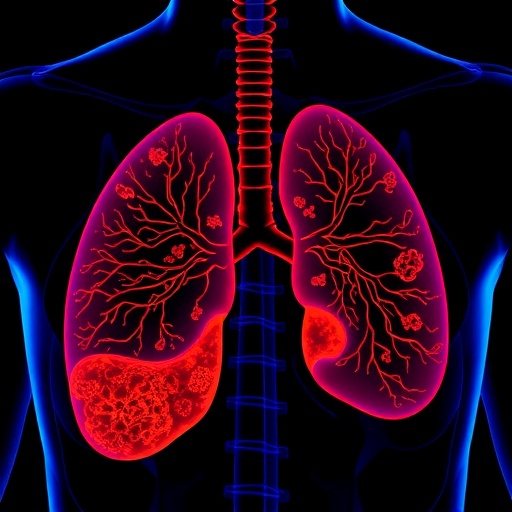Hepatocellular carcinoma (HCC), a primary malignancy of the liver, poses a significant threat to patients with chronic liver disease (CLD). Recent research has highlighted the implications of serum tyrosine levels as a critical determinant in both the development of HCC and overall mortality among this vulnerable group. The insights gleaned from an investigation into the incidence rates and causal relationships of various biochemical markers reveal that tyrosine, an amino acid prevalent in many biological pathways, emerges as an independent risk factor beyond traditional clinical metrics.
In a longitudinal study inadequately explored in current literature, researchers conducted a meticulous analysis of patients across a median follow-up of 3.5 years, revealing concerning trends. Findings indicated that 14% of these patients developed HCC, while 17% experienced overt hepatic encephalopathy (OHE). This underscores the urgent need for preventive strategies and further research as the incidence rates escalate, showing that the cumulative risks at one, three, and five years for HCC were 4%, 11%, and 15%, respectively, stressing the latent nature of this disease progression.
Among the slew of factors evaluated, the study’s statistical analysis demonstrated that higher serum tyrosine levels correlate with a significantly greater incidence of HCC when juxtaposed with patients maintaining normal tyrosine concentrations. For instance, patients representing the highest tyrosine quartile exhibited one-year, three-year, and five-year incidence rates of HCC at 4%, 16%, and 20%, respectively—versus rates of 3%, 8%, and 11% in those with normal tyrosine levels. The p-value of 0.002 showcases the statistical rigor, lending credibility to the hypothesis that serum tyrosine could be a pivotal component of HCC risk.
Moreover, when integrating serum tyrosine levels into existing predictive models, researchers established that this biomarker independently impacts the trajectory of liver disease. Adjusted sub-hazard ratios (SHRs) indicated that age, male sex, etiology, MELD score, platelet count, and serum albumin level persisted as relevant risk factors but notably, the SHRs for serum tyrosine indicated a threshold effect, which is pivotal in the personalized management of liver diseases. The study also explored the alternative use of the ALBI score instead of MELD, consistently reinforcing the implication of serum levels in disease prediction.
Although certain variables such as serum branched-chain amino acid (BCAA) levels and its ratio with tyrosine exhibited statistical insignificance, the focus remained on tyrosine due to its biochemical pathways involving liver metabolism and cellular proliferation. This suggests that while the liver processes BCAA in conjunction with tyrosine, alterations in their respective concentrations could trigger oncogenic processes conducive to HCC development. This notion consolidates the understanding that monitoring serum amino acids forms a part of a multifaceted approach to combat liver diseases.
Further delving into the potential mechanistic pathways, tyrosine metabolism plays a vital role in producing neurotransmitters and hormones, consequently influencing the overall status of liver health. Disturbances in this metabolic pathway can lead to tumoral behavior in hepatic tissues, suggesting that serum tyrosine not only acts as a biomarker but also implies potential therapeutic targets in modulating liver disease progression or even developing HCC. This necessitates a broader evaluation to comprehensively understand how such systemic metabolic changes can influence cancer pathways at the biological level.
The implications of these findings are far-reaching, impacting clinical practice by suggesting that routine measurement of serum tyrosine could help stratify patients at risk for HCC. With the high prevalence of CLD leading to significant morbidity and mortality worldwide, understanding these risk factors could pave the way for targeted surveillance and intervention strategies. This could enhance management protocols, ultimately leading to earlier detection and treatment of liver cancer, vastly improving prognostic outcomes.
As researchers continue to unravel the complexities surrounding HCC, there lies an ever-growing imperative for interdisciplinary collaborations. Combining insights from clinical research, biochemistry, and molecular biology will likely yield novel findings that could transition into transformative therapeutic strategies. The link between serum tyrosine levels and HCC should galvanize further investigations, not only to solidify these findings but to explore potential linear pathways for intervention.
This study, positioned at the cusp of clinical and translational research, serves as a clarion call. Enhanced biomarkers of risk, such as serum tyrosine, need to transform into actionable insights that clinicians can utilize for better patient management. The definitive role of amino acids in liver pathology could herald a novel paradigm in the approach to liver cancer prevention. Moving forward, establishing streamlined protocols to monitor these risk factors will be critical in reducing the burden of HCC.
Finally, considering the dynamic landscape of liver disease, vigilance in ongoing research is imperative. The medical community must remain informed and responsive to changes in biochemical landscapes and disease outcomes. This vigilance is crucial for the implementation of evidence-based practices for at-risk populations, emphasizing the need for continuous education on the importance of disease markers like serum tyrosine. Improving the quality of life for patients afflicted with liver disease hinges on a nuanced understanding of these biomarkers and their implications in the journey from chronic liver disease to hepatocellular carcinoma.
In summary, the new revelations surrounding serum tyrosine levels hold promise for reshaping our methodologies in evaluating liver disease prognosis and management. As researchers disseminate these findings, it is essential for the medical community to integrate this knowledge into standard clinical practice, ensuring that patients receive comprehensive care tailored to their unique risk profiles for HCC.
Subject of Research: Serum tyrosine levels as independent factors in HCC development
Article Title: Serum tyrosine level is an independent factor for hepatocellular carcinoma development and mortality in patients with chronic liver disease
Article References:
Oi, M., Miwa, T., Utakata, Y. et al. Serum tyrosine level is an independent factor for hepatocellular carcinoma development and mortality in patients with chronic liver disease.
Sci Rep 15, 37270 (2025). https://doi.org/10.1038/s41598-025-21373-z
Image Credits: AI Generated
DOI:
Keywords: Serum tyrosine, hepatocellular carcinoma, chronic liver disease, biomarkers, risk factors, personalized medicine




